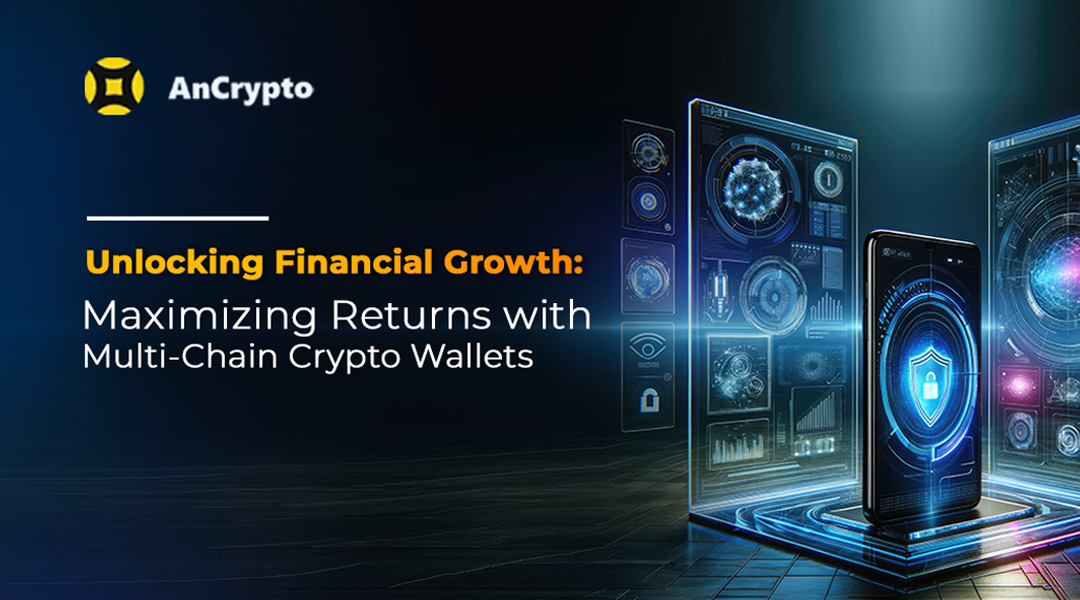Cryptocurrency and volatility often go hand in hand. But what if we tell you about a cryptocurrency that keeps its price steady? Enter stablecoins! These digital currencies are linked to stable reserve assets, such as currencies like USDT and USDC, or commodities like gold. Built on blockchain technology, stable coins offer speedy transactions, global accessibility, and programmable features. In this guide, we will shed some light on the importance of stablecoins and the various types currently circulating in the market.
Stablecoins: A Brief Introduction
A stablecoin is a type of cryptocurrency specifically designed to enhance the practicality of crypto transactions. Currently, cryptocurrencies exhibit high volatility, undergoing significant price fluctuations in a short span.
Stablecoins aims to address this uncertainty by striving to combine the stability of traditional currency with the advantages of crypto technology.
Stablecoins seek to mirror the value of real-world assets like the US dollar. This combination makes stablecoins particularly valuable, acting as a bridge between traditional assets and the crypto economy.
Let’s understand with an example:
Suppose you are running a business in the US and want to make a deal with a Chinese supplier. To deal with cryptocurrency exchange volatility, you convert USD 100,000 to USDC, a stablecoin pegged to the US Dollar. All transactions with the Chinese supplier happen in USDC, providing stability and shielding both parties from the uncertainties of exchange rate fluctuations. This not only ensures a consistent value but also brings cost savings and efficiency benefits, making cross-border transactions smoother and more predictable.
Know About Stablecoin “Depegging”
A stablecoin is designed to maintain a stable value, usually $1. This is its main purpose. But, if a stablecoin loses this stable value, it is called “depegging”. When this happens, the stablecoin becomes useless and can have a big negative impact on the whole crypto industry.
Depegging can happen for different reasons:
- If the reserves or assets backing the stablecoin cannot support its value anymore.
- If there is a crisis of confidence and many people try to sell the stablecoin at once.
- If the crypto market crashes and people panic sell stablecoins too.
Some fluctuation in value is normal for stablecoins. But major depegging events are very damaging. Stablecoins are meant to be stable – if they cannot hold their value, they cannot function properly. Therefore, maintaining the peg is critical.
Stablecoin: Categories
There are three main categories of stablecoins based on how they maintain a steady value:
- Fiat-Backed Stablecoins
- Crypto-Collateralized Stablecoins
- Algorithmic Stablecoins
These coins have reserves of government currencies like US dollars that back their value. Reserves are held by custodians and regularly audited. Popular fiat-backed coins include Tether (USDT) and TrueUSD (TUSD).
These stablecoins use other cryptocurrencies as collateral. Because those crypto reserves can be volatile, the coins are overcollateralized – meaning the reserves are worth more than the coin’s issued value. For example, MakerDAO’s Dai (DAI) holds 150% of its value in Ethereum and crypto assets.
These coins use a computer program to control the coin’s supply and maintain its pegged value. The algorithms replace reserves, similar to how central banks set monetary policy. However, algorithmic stablecoins lack the legal status and credibility of government-backed money. Coins like TerraUSD (UST) have struggled to retain their pegs during crises.
Things You Can Do Using Stablecoins
- Affordable Digital Payments-
- ICO and Token Sales-
- Collateral in Loans-
- Remittances-
- Smart Contracts-
- Tokenized Assets-
- Savings and Staking-
Users can use the stablecoins for everyday transactions of goods and services, similar to traditional fiat currencies. Users can send and receive stablecoins. Rapid transaction processing and minimal transaction fees render stablecoins such as USDC an optimal option for sending funds globally.
Investors can use stablecoins to participate in token sales without being exposed to the price volatility of other cryptocurrencies. Some initial coin offerings (ICOs) and token sales accept stablecoins as a means of investment.
Stablecoins can serve as collateral for loans in DeFi platforms. Users can lock up their stablecoins to borrow other cryptocurrencies, providing liquidity to the system.
One can use the stablecoins for cross-border payments and remittances. Their stability can reduce the volatility associated with traditional cryptocurrencies, making them more predictable for international money transfers.
Integrate stablecoins into smart contracts on blockchain platforms like Ethereum to create decentralized applications (DApps) for various purposes, such as decentralized finance (DeFi), without the risk of significant value fluctuations.
Use stablecoin to represent real-world assets on the blockchain. For example, tokens pegged to the value of gold, real estate, or other commodities can be created using stablecoins, providing a way to digitize and trade physical assets.
Users can hold stablecoins in interest-bearing accounts or participate in staking mechanisms to earn passive income. Some platforms offer attractive interest rates for holding stablecoins.
Stablecoins: Types
Stablecoins have proliferated, with more than 200 varieties. Here is the list of some popular ones:
- Tether (USDT): Pioneer of Stablecoins
- USD Coin (USDC): Tokenizing U.S. Dollars on Ethereum
- Binance Dollar (BUSD): Collaboration of Binance and Paxos
- Dai (DAI): MakerDAO’s Decentralized Finance Pioneer
- Pax Dollar (USDP): Formerly Paxos Standard (PAX)
- Gemini Dollar (GUSD): Regulated Stablecoin by Gemini Exchange
- PayPal USD (PYUSD): Collaboration between PayPal and Paxos
Tether holds a market cap of nearly $72.5 billion as of June 2022. Acknowledged as the world’s first stablecoin, it encountered a critical moment in May 2022 when its peg faced a significant challenge.
Managed by the Centre consortium, a collaboration between Circle and Coinbase, USD Coin represents tokenized U.S. dollars. Circle, a peer-to-peer payments company with backing from Goldman Sachs, and Coinbase, a prominent cryptocurrency exchange, contribute to its administration.
Binance Dollar, backed by the U.S. dollar on the Ethereum blockchain, stands out as the first government-regulated stablecoin approved by the New York State Department of Financial Services (NYDFS). Binance, the world’s largest cryptocurrency exchange, and Paxos, a leading crypto infrastructure provider, are key collaborators.
Dai, a cryptocurrency on the Ethereum blockchain, is regulated and maintained by MakerDAO, a decentralized autonomous organization (DAO). Recognized as an early example of decentralized finance (DeFi), it has achieved mainstream adoption.
Formerly known as Paxos Standard (PAX), Pax Dollar operates on the Ethereum blockchain and is regulated by the New York Department of Financial Services (NYDFS). Issued by Paxos, a financial institution, it underwent a transition to its current name.
Built on the Ethereum blockchain (ERC-20), the Gemini Dollar maintains a 1:1 value peg to the U.S. dollar. Regulated by government authorities, it is hailed as the first regulated stablecoin, alongside USDP and BUSD. Gemini Exchange, its creator, emphasizes its compliance with regulations.
A recent entrant, PayPal USD is a stable coin created in collaboration with Paxos. Launched by PayPal, it is backed by dollars and other assets. Ensuring transparency, Paxos commits to monthly asset reports and third-party audits, with the inaugural audit anticipated in September 2023.
In Nutshell
Stablecoins are important in the world of cryptocurrencies. They aim to keep a stable value, like regular money, in a blockchain setting where digital cash might not be stable. Even though all stablecoins try to keep a fixed ratio to a certain regular currency, what they use as collateral (or backup) can affect how stable they are.
Secure Your Stablecoins with AnCrypto Wallet- Your Gateway to Hassle-Free Purchases
Purchase any stablecoin you want using the AnCrypto wallet. With instant payment options like UPI, IMPS, or NEFT bank transfers, AnCrypto allows you to securely convert fiat into your chosen stablecoin. Once purchased, you can store coins safely in this crypto wallet and trade them on integrated decentralized finance (DeFi) platforms to earn attractive interest rates. AnCrypto enables easy access to DeFi lending and staking activities
With robust security protections, transparent fees, and rupee payment integration, AnCrypto provides users with an ideal stablecoin gateway to explore DeFi opportunities.





